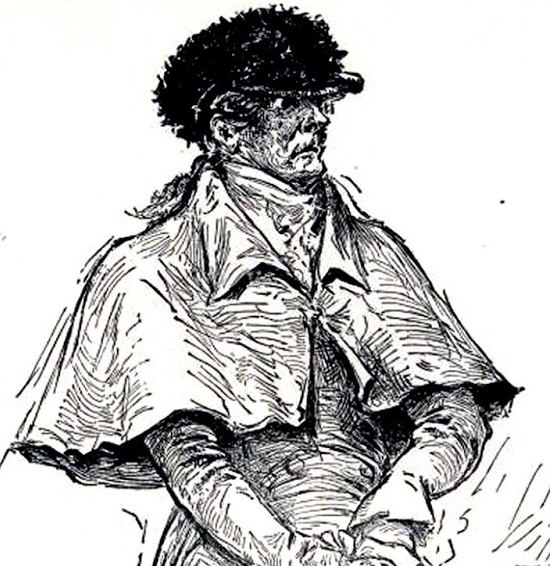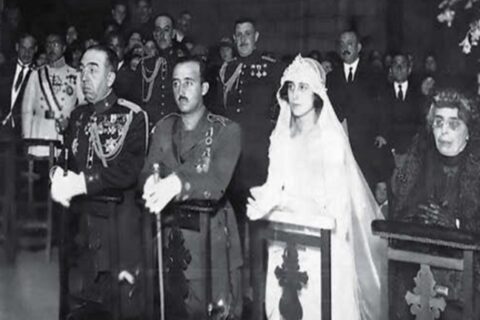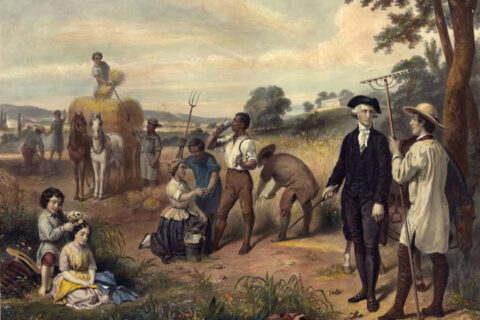It is nothing new to suggest the relationship, and outright similarity, between Southerners and the Cavaliers of seventeenth century England. Grady McWhiney and David Hackett Fischer made the ethnic and migratory case to a wide audience in their books Cracker Culture and Albion’s Seed (both originally published in the late 80s). Before then, though, the similarity was an entrenched cultural understanding among most people in the Anglosphere: Southerners were Cavaliers… or at least descended from them. Yes, for their gentility and penchant for carousing, for their gallantry and bravery in America’s wars (not just the war), for their religion, and also for their ideology. The antidemocratic motto of John Randolph of Roanoke: “I am an aristocrat. I love liberty, I hate equality” conveys pretty well the spirit of the Old South’s creed. The idea that progressive democracy and ordered liberty are mutually exclusive is an old understanding among our people. Perhaps this too was made a little more famous, or infamous, in The Patriot when Mel Gibson’s character gives the speech about how “1,000 tyrants one mile a way can trample a man’s rights just as easily as one tyrant 1,000 miles a way can.”
The Southerner I want to talk about today, though, who captures both the ideology and gallantry of the Southern-Cavalier stereotype is Confederate Navy Admiral Raphael Semmes. Lee is a familiar “go to” when talking about this sort of thing, and even more so perhaps is JEB Stuart (the “Confederate Prince Rupert” as one London newspaper called him in 1863). Semmes, however, is less conspicuous, but equally deserving. The major inspiration for this is a single line that comes from a letter to his daughter that was published in Semmes’ war time book Memoirs of Service Afloat, During the War Between the States:
If we succeed in preserving the principle of State sovereignty—the only principle which can save this whole country, North and South, from utter wreck and ruin—all will be well, whatever combinations of particular States may be made, from time to time. The States being free, liberty will be saved, and they will gravitate naturally, like unto like—the Puritan clinging to the Puritan, and the Cavalier to the Cavalier. But if this principle be overthrown, if the mad idea be carried out, that all the American people must be moulded into a common mass, and form one consolidated government, under the rule of a majority—for no constitution will then restrain them—Constitutional liberty will disappear, and no man can predict the future—except in so far, that it is impossible for the Puritan, and the Cavalier to live together in peace.
Semmes falls into what people like James McPherson (press S) call the “ideological” category of men who signed up to fight immediately in 1861. As one may be able to tell from the senate floor-like profundity of this excerpt, Semmes was a constitutional thinker in the Calhounite tradition, a lawyer, a judge, and a post-war professor of philosophy and literature at Louisiana State University (Geaux Tigers).

Although a Marylander, Semmes would become more famous in his adopted home of Mobile, Alabama (the city which removed his statue earlier this summer). During the war he, and his Liverpool-built ship the CSS Alabama, took more prizes at sea than any other vessel on either side and crippled the Union’s merchantmen. He was celebrated by the British on a stop in South Africa, and was heralded by the locals in Singapore. He was rather unassuming and unremarkable in stature but he made up for it in spirit (He was what Barney Fife would call “wiry”). And he exhibited the same swashbuckling attitude at sea that JEB Stuart did on land. The real Prince Rupert after all did become a well regarded Royal Navy commander, and another famous cavalier, Christopher Myngs, was the man who mentored one of the most celebrated pirates (excuse me, privateer) in English history: Sir Henry Morgan. Perhaps Semmes was just following in their footsteps.

His exploits at sea were recalled the spirit of the cavaliers, and hearkened back further to the “Sea Dogs” of Elizabeth I’s court, who issued forth from the mouth of the Thames and made the world in England’s image. But that is not what we are here to talk about (Wolf of the Deep by Stephen Fox is worth a read if you want to know more of this). The quote I provided, which is central to this piece, is not that significant just because it was Semmes that wrote it though. Rather, it is important because he distilled something on paper that was already well known.
The Confederates, and the Brits who were secretly cheering for them, saw themselves as Cavaliers who were defending hierarchy and local prerogative against an unrestrained and centralized general will. In a sense, Semmes’ dedication to “preserving the principle of State sovereignty” was the only method that could have staved off the destruction of the old Union by the rising mid-nineteenth century forces of mass democracy and nationalism. More effective than any system of checks and balances within the general government itself, this antidemocratic principle that Semmes and Co. wanted to defend acted as something that Richard Weaver refers to as an “intermediate structure” against the power of a democratic center. From a loyalty standpoint, this falls right in line with the cavalier tradition in that they were loyal to their true sovereign and Semmes, like his comrades, were loyal to the sovereign and organic entities that created the federal government.
This is part of the same vein of thought that exists among members of “the Right” to this day and is what has been central to our people for years no matter if they were flying the Bonnie Blue, the Jolly Roger, or the famous Royalist banner of Sir Horatio Cary that taunted the roundheads with its inscription: “COME OUT YOU CVCKOLDS!”






Great article! Admiral Semmes seems like he was my kind of guy. I’ve read precious little about him, but you have inspired me to dig into the man and his life a good deal more. Thanks for that.
Talk english please
My comment was about a deleted post
Well, as a resident of the greater Mobile AL area I never knew this about the man whose namesake is now a small city. But obviously from the quote above he was a raging Misogynist, Homophobic, Transphobic, Abelist, Racist, right-wing, Nazi, man-splaining bigoted, intolerant cisgendered whte privileged elitist!!!!
Sounds like my kinda guy!!! Will do more research,
Thanks
lol. Beginning @3:10 of the clip:
https://youtu.be/FVNDI2IaUeo